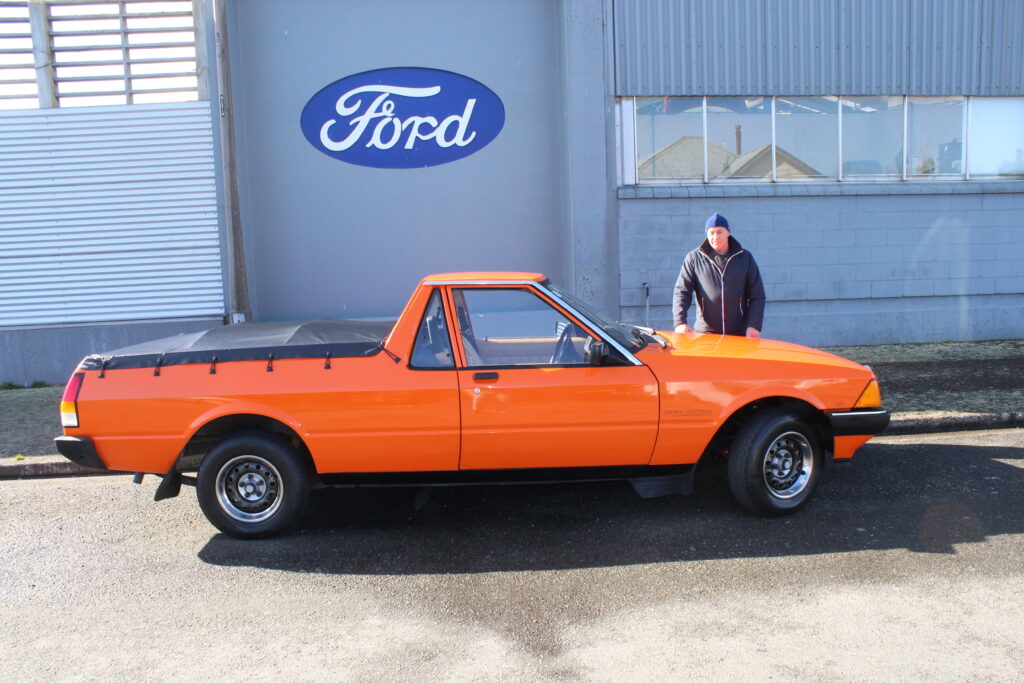Rugged Ford and Holden utes formed the backbone of farm and business transport here and in Australia for some 70 years. The Japanese pickup now commands a far greater share of the market than the utes ever did but that means GM Holden and Ford Falcon utes and panel vans are more highly prized than ever
By Quinton Taylor
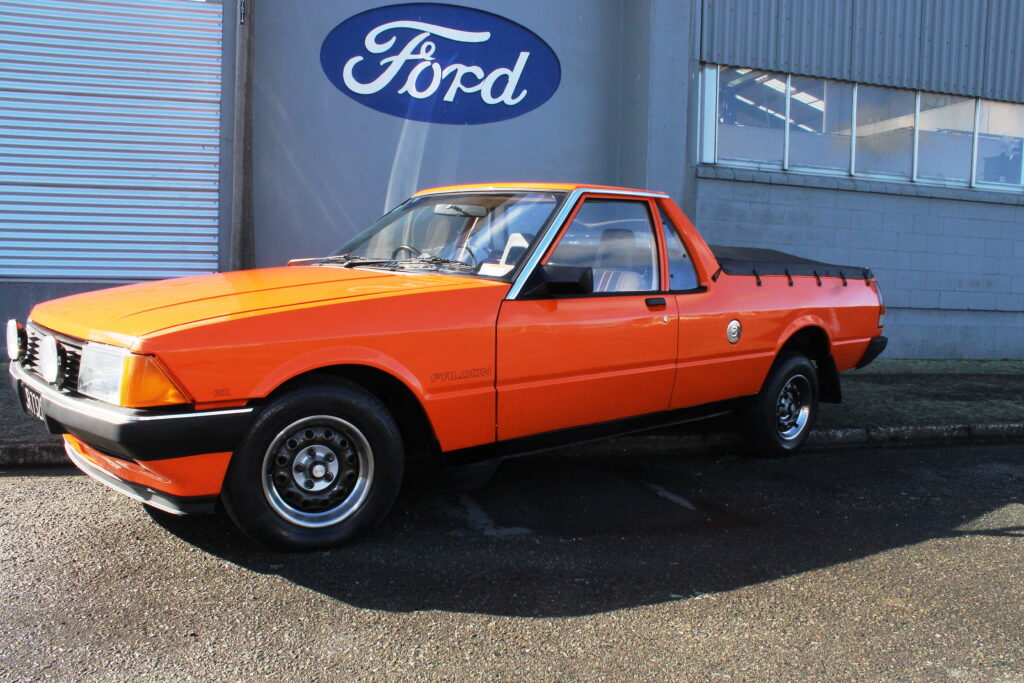
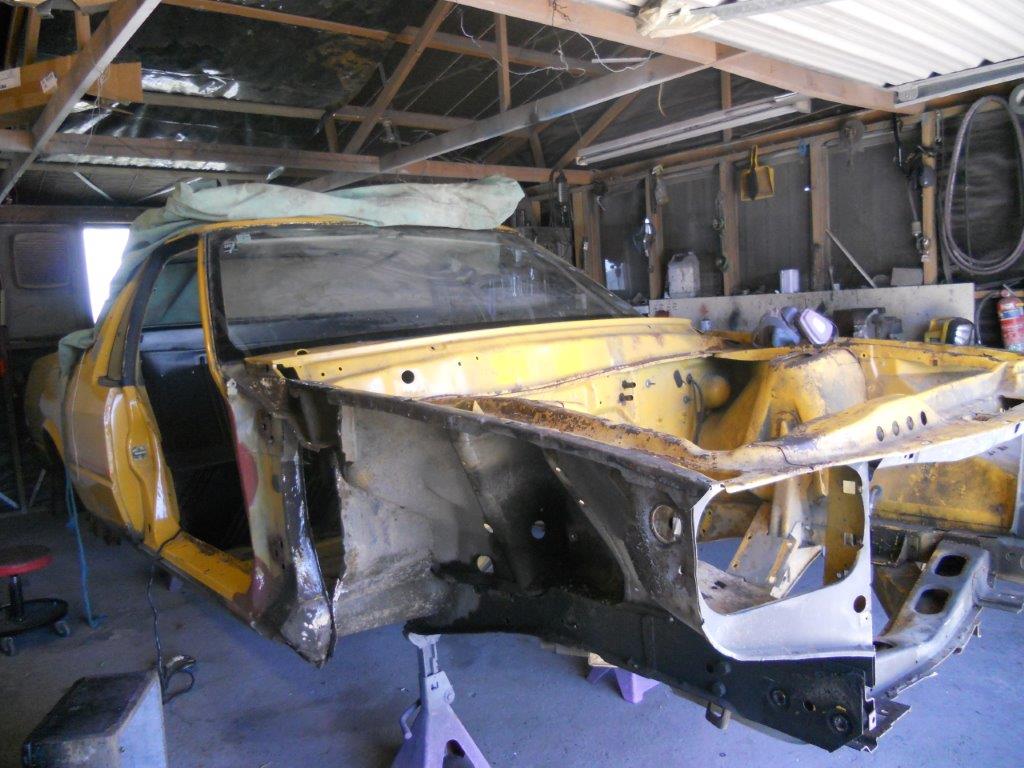
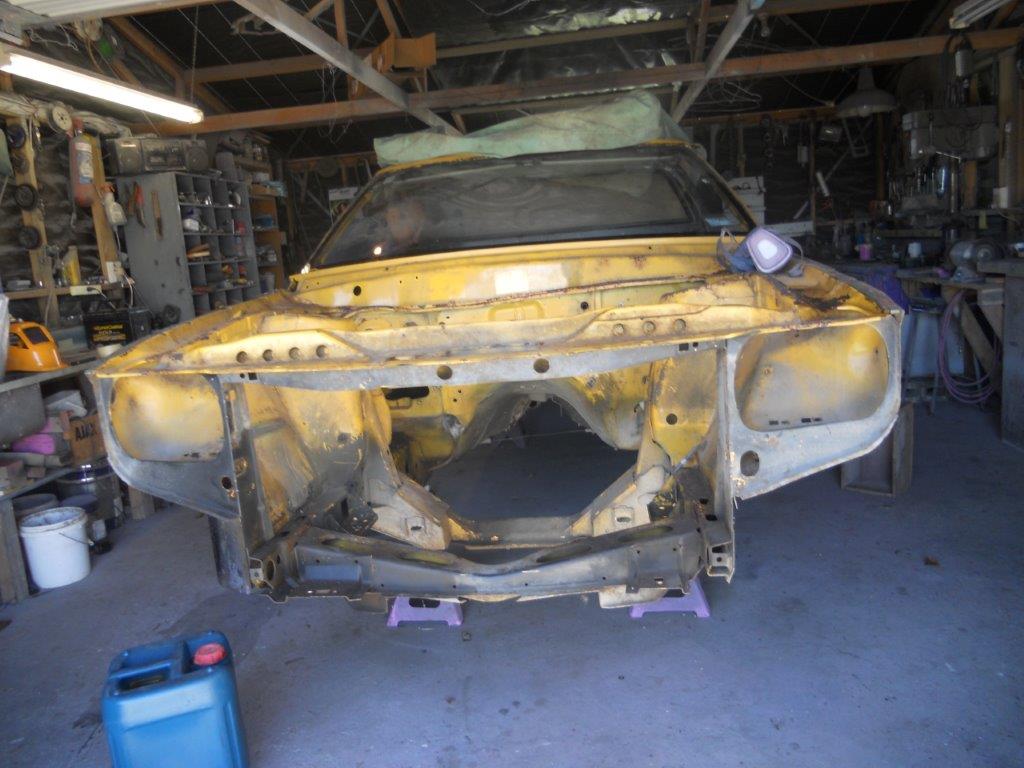
The demise of car production in Australia, first of BMC and Chrysler and in recent times of the big two, has only increased the popularity of those vehicles despite their increasing rarity.
Ann and Lew Eustace have a passion for classic cars, particularly ones from the USA, and their Invercargill garage contains some amazing examples in pristine condition thanks to Lew’s skills and high standards working with metal. Lew has lost count of the number of cars and trucks he has restored over the years. For a number of years he also helped restore some of the exhibits at what is now Bill Richardson Transport World in Invercargill. He explains how his interest in restoring cars started, with an incident in his youth motivating the quality he achieves in each restoration.
“I learnt early on after smashing my old man’s car up!”
These days, Lew’s impressively finished projects are strictly for friends and family. When I called in to see him, he was in the process of completing the bare-metal repair of an early 1950s Austin convertible on his rotisserie.
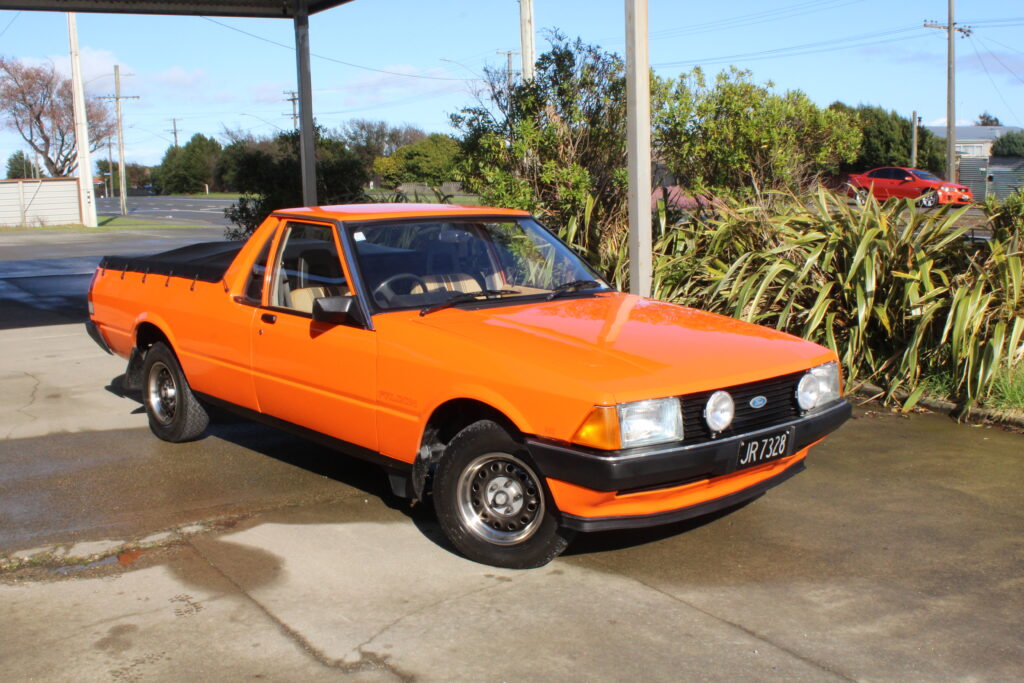

Last but not least
Back in 2018, Lew was contacted by a nearby shearing contractor, the late Errol Buchanan, for his advice on what to do with a Ford Falcon utility that had been languishing in Errol’s barn for some 20 years.
“He asked me to see if it was worth restoring, and I said it was. Then, he sort of changed his mind about restoring it and said I might as well wreck it and see what I could get for it.”
Lew wasn’t about to wreck it, though.
“It turns out it was the last of the model off the line in 1980 with a V8, and Errol was its first owner.”
It turned out to be special in other ways, too. Despite having other Fords in their collection over the years, the Eustaces had never owned an Australian model. Intrigued by the ute, Lew began finding out more about it, and it wasn’t long before he discovered that there was a bit more to its history. It would be an interesting project to complete.
“I thought I’d carry on with it, and then I started finding out that it was a bit different. The 351 cu. in. Cleveland V8 alerted me. Initially, I didn’t realise the significance of the ‘K’ on the end of the VIN number and body plate showing that the 351 Cleveland V8 was factory fitted.”
Lew’s curiosity was heightened during the restoration after a comment made by a local rust-proofing contractor.
“When I sent the suspension and diff to get sandblasted with Chris Kergozou, he asked me if I was doing up a Falcon GT. I told him no, so I went a bit further with trying to find out exactly what I had got. It had all GT suspension, four-wheel discs, and an S Pack trim package. It looked like it was one of the last off the production line, so they [Ford] just threw everything at it and it turned out to be quite a nice car.”
Enquiries with Ford Australia revealed Lew’s ute was unique in that not only was it the genuine article, but it was one of only 56 utes factory fitted with the 351cu. in. V8 engine. Just 37 had automatic transmissions. However, Lew’s example is the sole example with all optional fittings. It is indeed a one-off. The 302cu. in. V8 option was reasonably well known but the 351cu. in. engine is very rare and it came with a limited slip differential.

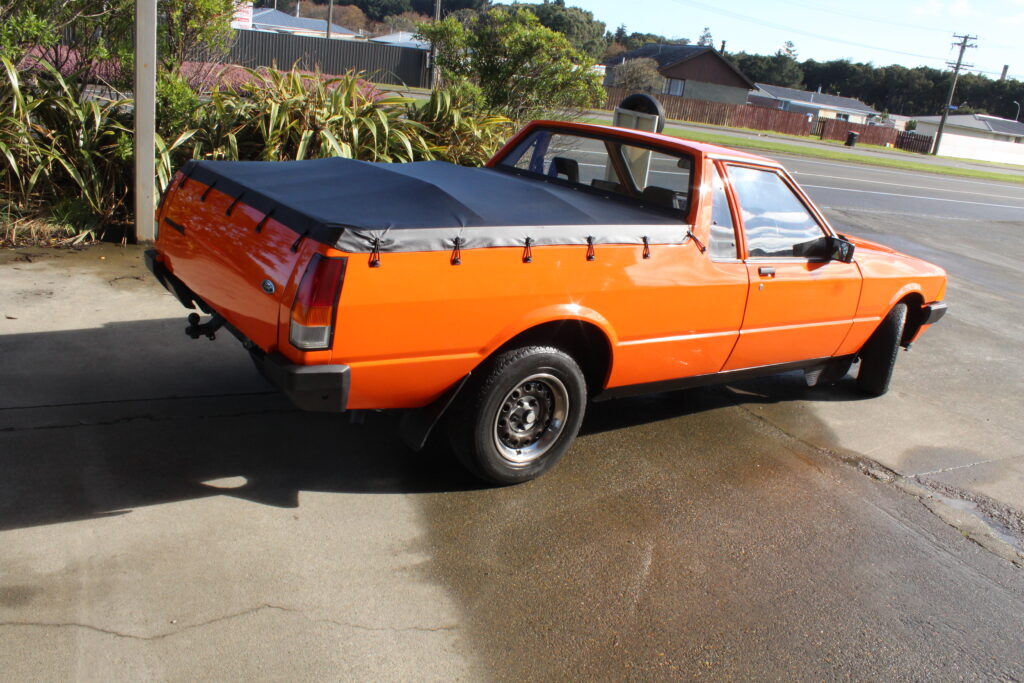
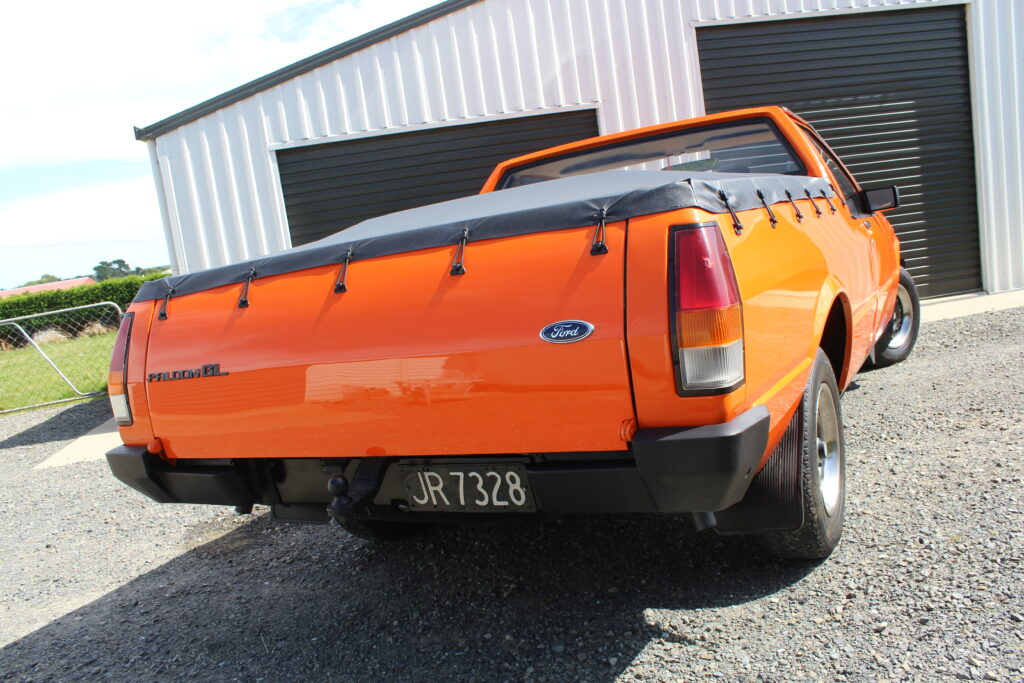
Every last nut and bolt
Two years ago, Lew finished a thorough restoration, and the impressive ute has taken on a new life and colour. Lew plays down the amount of effort required, but, despite his protestations, I suspect he put a lot of time into the project. A few unwanted tenants were evicted along the way.
“It didn’t take me long. There had been mice living in the firewall, which had caused a bit of damage. It apparently broke down and was pushed into a shed. It was 20 years to the day when I pulled it out, and it sat in my other shed for 3 years before I started on it. That’s why it’s in such good order — it’s been kept in a shed for so long and still is.”
Despite being 40 years old, the ute still has its original interior, untouched by the squatters, a factory radio cassette, and S Pack cloth upholstery, which was in excellent condition and only needed a thorough cleaning.
“There was some minor rust in the front guards, and Errol had a set of new mudguards sitting in his shed to go on it. It was originally Ford yellow [marigold] but I didn’t think it suited it and I changed it to very close to the correct Ford orange.”
The utility still has all the correct assembly decals and fittings. It is especially impressive under the bonnet where the big Cleveland V8 resides.
Some Ford enthusiasts at a local car show went through the numbers and engine plates, telling him it had definitely been fitted at the factory with the correct GT wheels and other bits and appeared to be the genuine article and not modified. Despite just 150,000 km recorded, Lew still pulled the motor down to check it and clean it.
“I put in new gaskets and some fresh oil, cleaned up the thermal carbie on the 351 Cleveland, and thought, Well, it sure runs nice.”
No argument there, as the deep rumble from this big V8 adds to the character of this rare utility. Gleaming in the sunshine, the paintwork is impressively eye-catching and a good choice. Underneath, there is ample evidence of detailed work. Both doors open and close with an impressive clunk. Everything is in such great condition for the age of the vehicle and, despite some detail items needing to be sourced, it’s as good as when it left the factory.
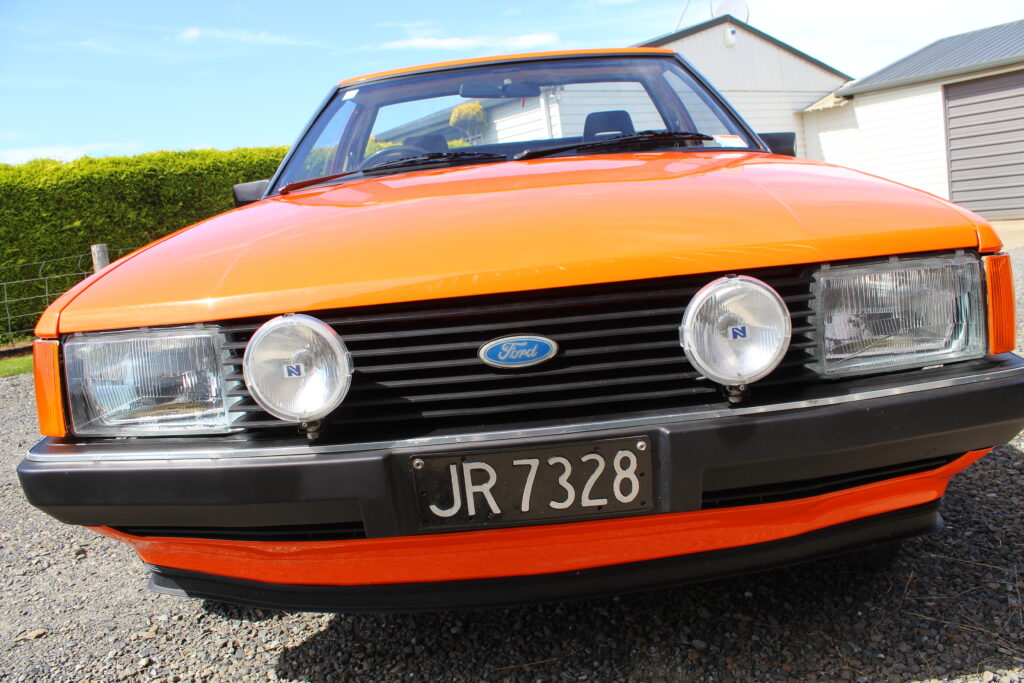
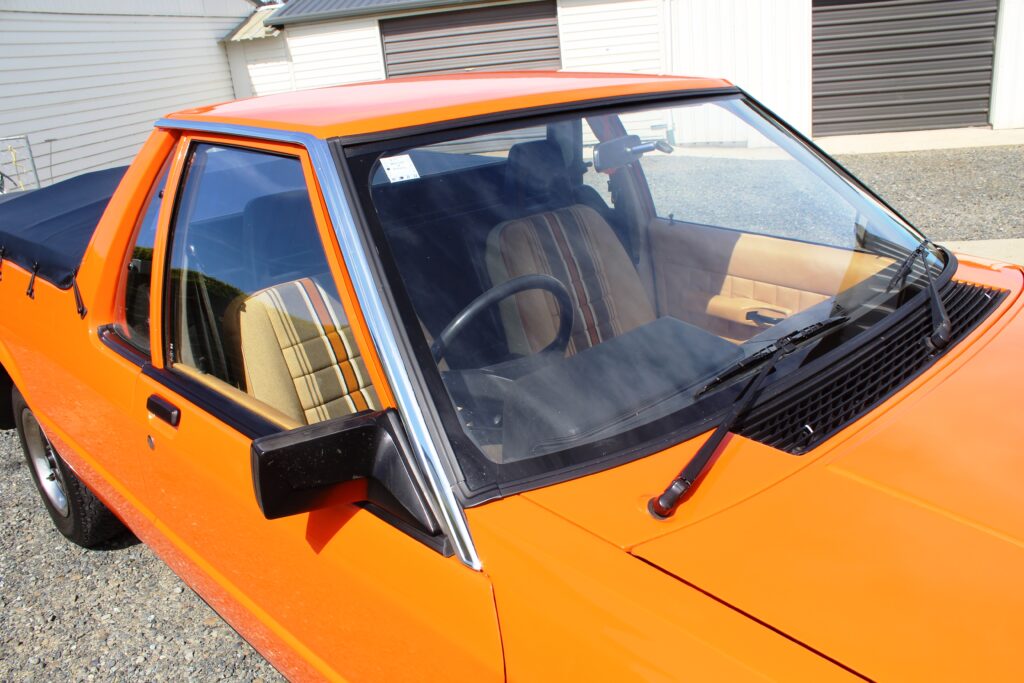
A star is born
Two months after the Falcon was finished, the Eustaces took it to the 2019 Cromwell Classic Car and Hot Rod Show and were thrilled with the comments made.
“A lot of people enjoyed it and commented on it. I get a lot of satisfaction out of people enjoying my cars,” Lew tells us.
We asked if getting the tired workhorse back into pristine condition had been worth the effort.
“Absolutely! That’s my problem — in anything I do, every nut and bolt has to come off. Upholstery is the only thing I don’t do. I’ve got a fellow who comes out and does that, and I’ve someone to help with the electronics.”
Lew is very proud of how the Falcon has turned out and intends to hold onto it for a while and enjoy it.
“If someone wants it or if it goes into a museum or something like that, then I’ll let it go because then it will be well kept. It won’t be abused — that’s the worry, isn’t it? When you restore something like that, you get a bit of pride in it, and I like people to enjoy what I have created.”
In March this year, Ann and Lew received a letter from Ford Australia verifying they had a genuine production ute. With a build date of April 1980 and with the Falcon XE model production underway in March that year, it was indeed one of the last of the XDs off the production line.
Lew suspects that, with Ford winding down the XD and an excess of Australian-made, Cleveland 351 V8s on hand — they were no longer made in the USA — this particular ute received the big engine to help use them up. The Cleveland V8 motors were in the process of being shipped to the US for fitting to the Italian De Tomaso Pantera, which Ford had taken over as a sports model in its US line-up.
Given the lighter weight of the ute compared with the XD sedan versions, the 351 Cleveland–powered model was something of a Jekyll and Hyde rocket ship or big load puller in its day. This one will lead a much more sedate life now.
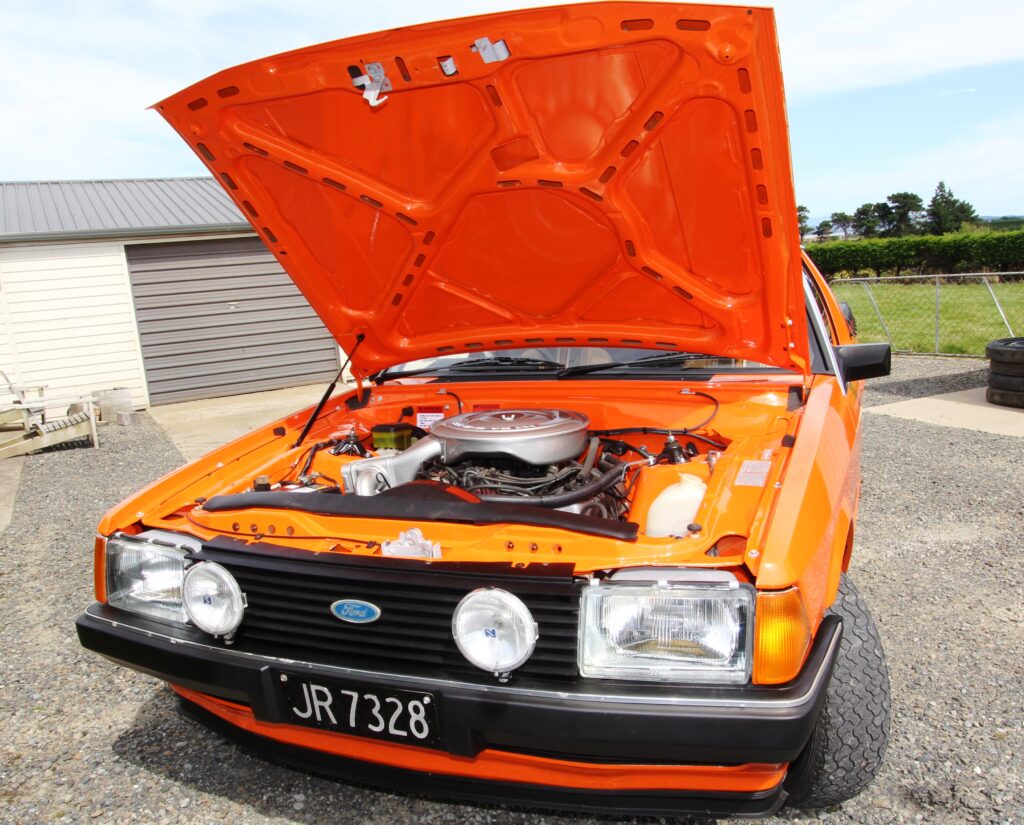
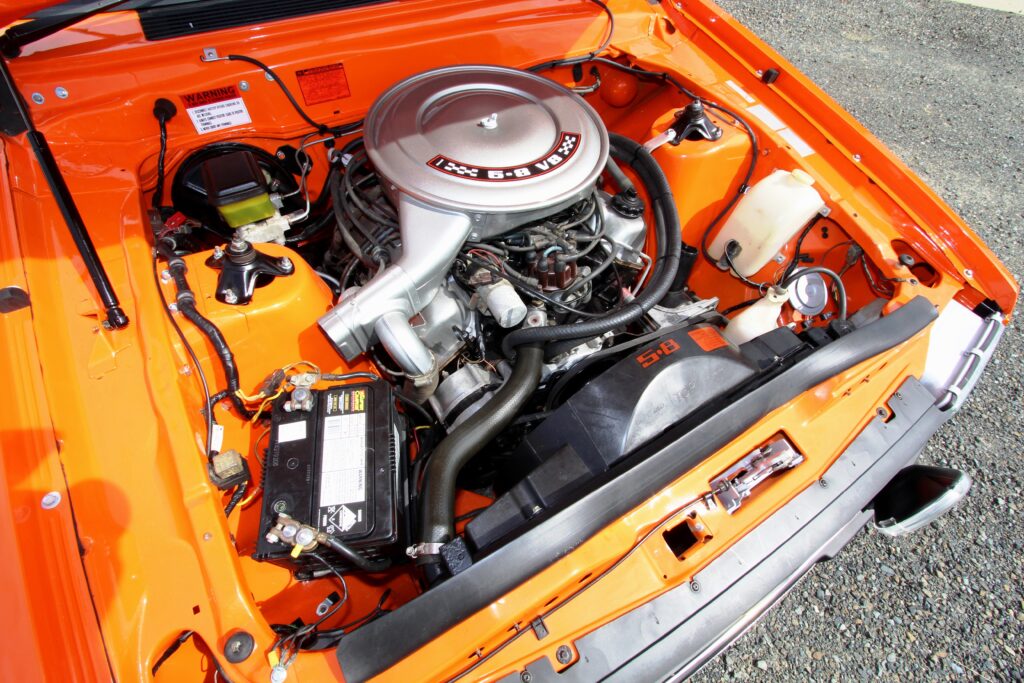
SPECIFICATIONS
Model: Ford Falcon XD utility GL with S Pack option
Engine: Cleveland 351cu. in. (5800cc) V8, 8.9:1 compression ratio, iron cylinder heads
Bore/stroke: 102mm x 89mm
Power: 149kW @4300rpm
Torque: 415Nm @3000rpm
Fuel: Two-barrel carburettor, electronic ignition, 17.7l/100km
Suspension: Front: independent double wishbones with reaction strut in tension, anti-roll bar, Bilstein gas shock absorbers; rear: Salisbury limited slip differential
Brakes: Four-wheel disc brakes, ventilated front and solid disc rear
Steering: Recirculating ball, variable ratio power steering
Transmission: Three-speed T-bar automatic
Options: S Pack trim — slotted wheels, pinstriping, ‘S’ badges, wool-blend cloth trim, digital clock, driving lights, blacked-out paint treatments and sport instrumentation including a tachometer; Class 1 towing pack
Tyres: ER70H14 on steel rims
Performance: 205kph
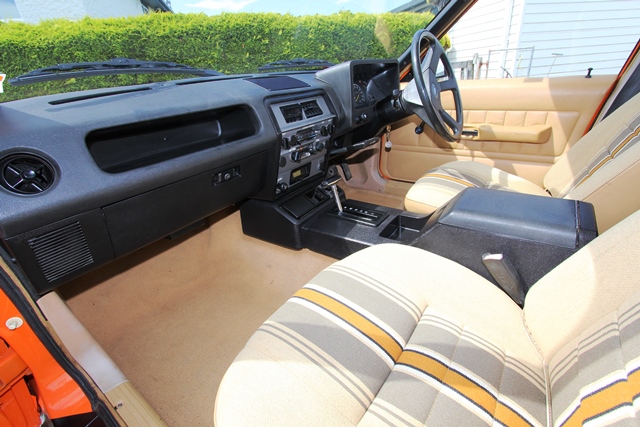
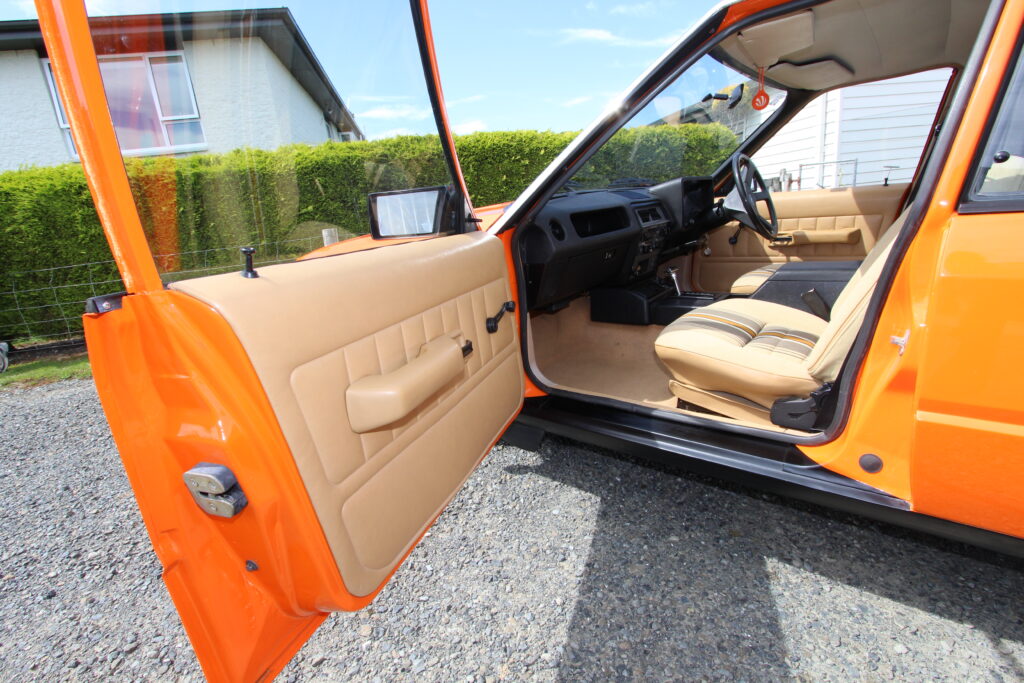
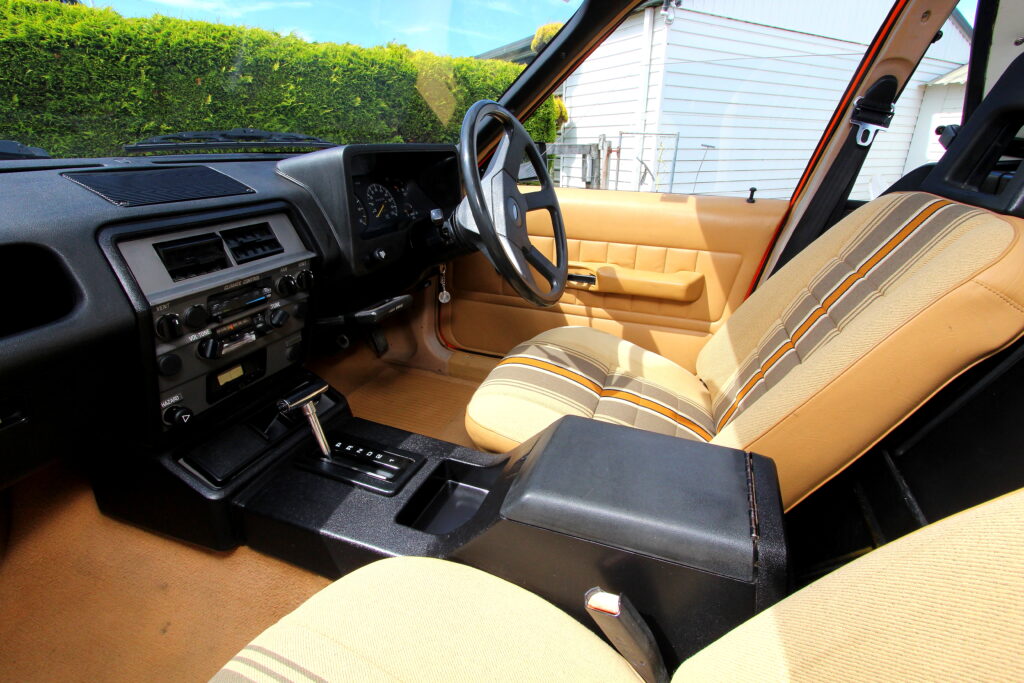
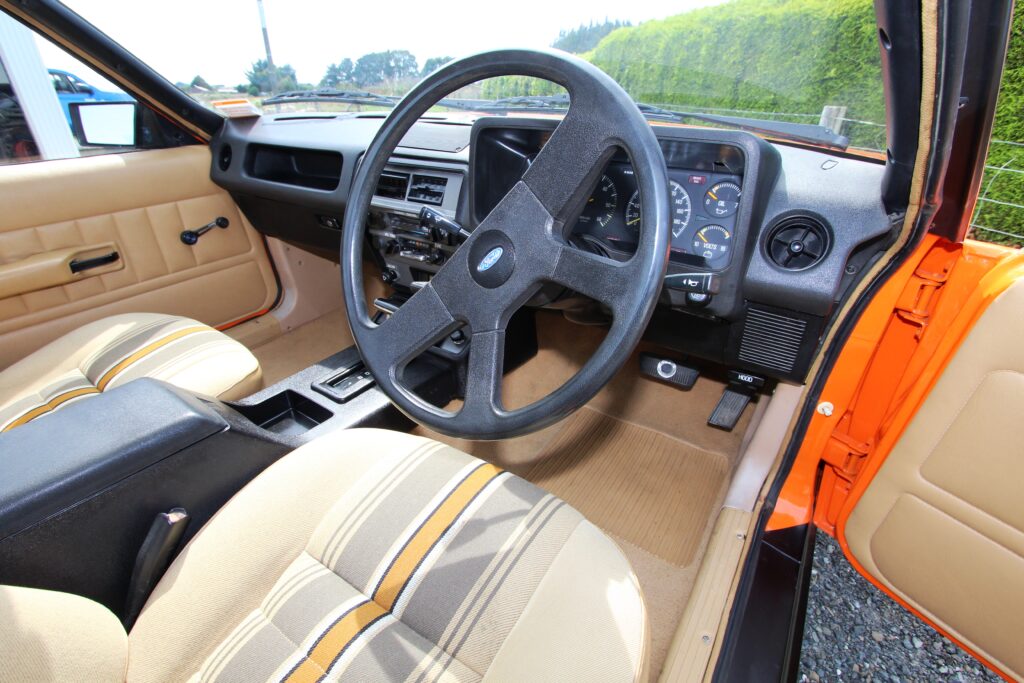
Eurostyle Aussie
Ford Australia dropped the Coke-bottle styling and went all Eurostyle for its XD Ford Falcon ‘Project Blackwood’ models released in March 1979. Its attractive square lines mostly echoed the Ford Granada and Cortina Mk4’s styling.
The big two-door coupe version of the preceding XC model was dropped, and the new five-model range consisted of Falcon GL sedan and station wagon, Fairmont sedan and station wagon, and a top of the range Ghia sedan. Commercial versions were launched in September 1979 and consisted of a base model Falcon utility and GL version plus Falcon base model van and GL versions. The fresh new styling, with its distinctive door sills lower than the back and front windscreen and square lines, was a departure from the rounded lines of the XC model. It was well received and made steady sales in both Australia and New Zealand.
In 1976, Ford collaborated with Honda in the initial design and production of an aluminium cylinder head for its sixes. It was to replace the old cast-iron unit to lose weight and gain more efficiency. Introduced midway through the XD’s production, the head was supplied by Honda for a short time before Ford Australia started using adapted tooling at its Geelong, Victoria, engine plant.
Here in New Zealand, the model was the first Ford for some time to be used by local police and the Ministry of Transport (MOT) as a frontline patrol car. The old sixes revved so freely that MOT headquarters issued a directive instructing officers not to hold lower gears on their patrol cars’ automatic transmissions following a string of expensive engine blow-ups!
Engines began with the base 3.3-litre six, 4.1-litre six, 302cu. in. V8, and 351cu. in. (Cleveland) V8. Transmissions were the base column change, three-speed manual transmission, or console-mounted four-speed manual. Automatics were three-speed with column or console-mounted gear selectors.
A total of 197,293 XD Ford Falcons were built, with the model replaced by the XE in March 1982. Ford built a total of 6017 utilities, just 56 of them powered by the Cleveland 351 V8 engine.
